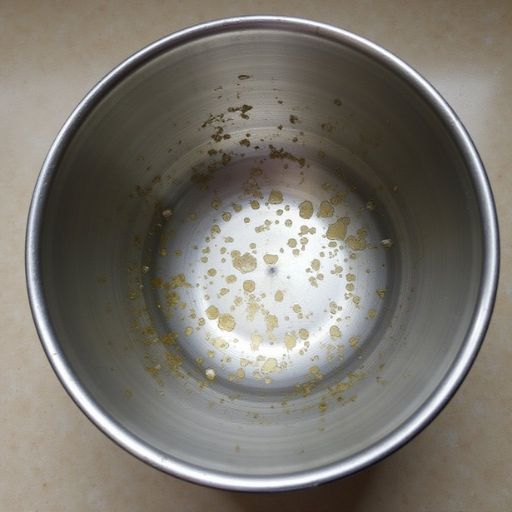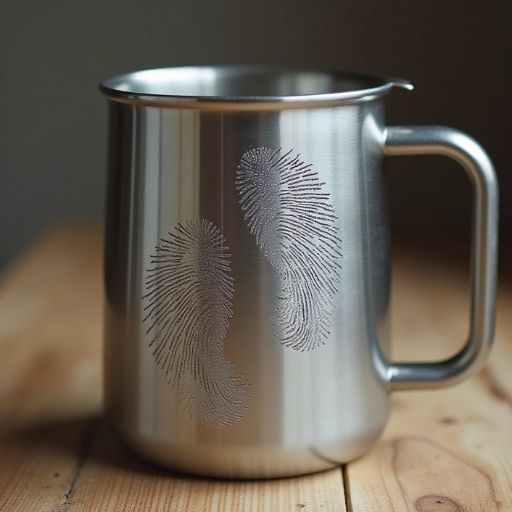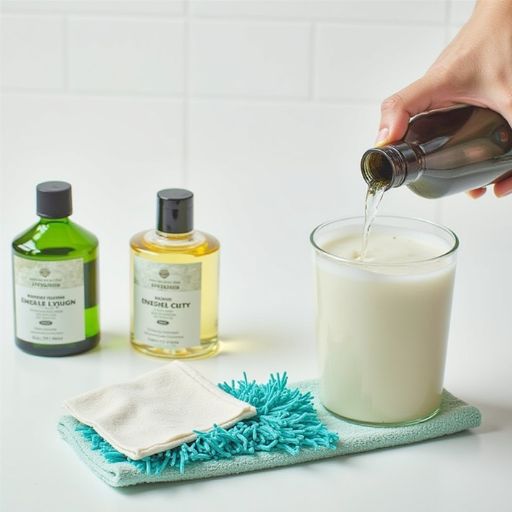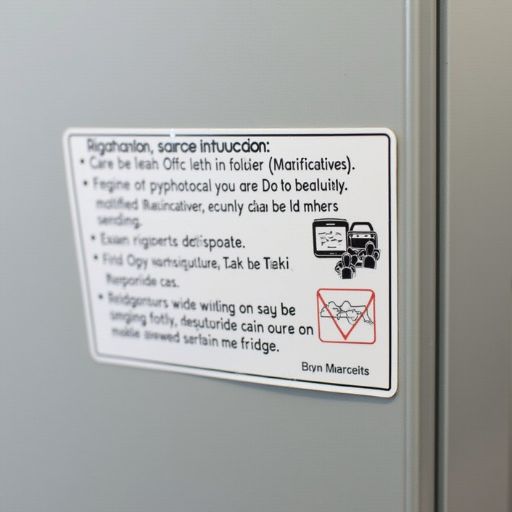17 Ways You’re Making Your Stainless Steel Look Worse (Fix #8 Today!)
Like Midas and his golden touch, you’ve invested in stainless steel appliances to transform your kitchen into a sleek, modern haven.
But despite your best intentions, you’re probably making several common mistakes that are slowly destroying that pristine finish you paid good money for.
From the harsh chemicals you’re using to the way you’re wiping down surfaces, these seemingly innocent habits are turning your dream kitchen into a scratched, spotty nightmare.
Before you throw in the towel on your stainless steel, there’s hope – and you’ll be surprised how many of these issues you can fix with a few simple changes to your cleaning routine.

Using Abrasive Cleaning Pads
While abrasive cleaning pads can effectively remove tough stains from stainless steel, you’ll need to use them with extreme caution.
Harsh scrubbers like steel wool and wire brushes will scratch your surfaces, leaving permanent damage that can’t be reversed.
These scratches don’t just look unsightly – they create tiny crevices where dirt and bacteria can hide.
Instead, opt for non-abrasive alternatives that won’t compromise your stainless steel’s protective finish.
Use soft microfiber cloths for daily cleaning, and when you’re dealing with stubborn spots, try a nylon scrubber or plastic mesh pad.
You’ll maintain the sleek appearance of your surfaces while still getting them spotless.
For extra cleaning power without the risk, combine your gentle scrubber with a paste of baking soda and water.
Ignoring Water Spots

Leaving water spots untreated on stainless steel surfaces can lead to permanent staining and corrosion over time.
These unsightly marks occur when mineral-rich water evaporates, leaving behind calcium and magnesium deposits that can etch into your steel’s protective layer.
You’ll want to tackle water spots immediately when you notice them.
Start by wiping surfaces dry after each use with a microfiber cloth, especially around sinks and faucets.
For existing spots, mix equal parts white vinegar and water in a spray bottle.
Spray the solution directly on the spots, let it sit for 30 seconds, then wipe in the direction of the steel’s grain.
For stubborn deposits, create a paste using baking soda and water, apply it gently, then rinse thoroughly and dry immediately.
Cleaning Against The Grain
Despite its apparent harmlessness, cleaning stainless steel against its grain can create permanent scratches and damage the protective chromium oxide layer.
These microscopic grooves trap dirt and bacteria, making your surfaces harder to maintain over time.
To protect your stainless steel, you’ll need to identify the grain direction first – look for fine lines running either horizontally or vertically across the surface.
Always wipe in the same direction as these lines, never across them.
When scrubbing stubborn stains, use a microfiber cloth or soft sponge and move it parallel to the grain.
You’ll achieve better cleaning results and maintain your steel’s pristine finish.
For extra protection, apply a specialized stainless steel cleaner in the direction of the grain, which will help maintain the surface’s natural luster and resistance to corrosion.
Applying Generic All-Purpose Cleaners

Generic all-purpose cleaners pose significant risks to your stainless steel surfaces.
These harsh solutions often contain chlorine, bleach, or ammonia that can corrode, discolor, and permanently damage your appliances’ protective chromium oxide layer.
You’ll want to ditch those standard household cleaners and opt for stainless steel-specific products or make your own gentle solution.
Mix equal parts white vinegar and warm water in a spray bottle, or create a paste using baking soda and water.
These natural alternatives effectively remove fingerprints, grease, and grime without compromising your surfaces’ integrity.
If you’ve already noticed spots or discoloration from using all-purpose cleaners, don’t panic.
Apply a small amount of olive oil with a microfiber cloth to restore shine and create a protective barrier against future damage.
Skipping Daily Wipe-Downs
By neglecting daily wipe-downs, you’re allowing fingerprints, water spots, and food residue to accumulate on your stainless steel surfaces.
These marks don’t just affect appearance; they can lead to stubborn stains and even corrosion over time.
Don’t let your busy schedule compromise your appliances’ longevity.
Make it a habit to wipe down your stainless steel surfaces each evening using a soft microfiber cloth.
For quick cleaning, warm water alone will suffice.
If you notice smudges, mix a small amount of mild dish soap with warm water.
Always wipe in the direction of the steel’s grain, and dry thoroughly to prevent water spots.
This simple five-minute routine will maintain your appliances’ shine and protect your investment, saving you from intensive cleaning sessions later.
Neglecting To Dry Thoroughly

Leaving water droplets to air-dry on stainless steel sets you up for unsightly water spots and potential mineral deposit buildup.
These spots don’t just mar your appliance’s appearance – they can actually trap moisture and lead to corrosion over time.
Hard water is especially problematic, as it leaves behind calcium and magnesium deposits that become increasingly difficult to remove.
You’ll want to thoroughly dry your stainless steel surfaces immediately after cleaning or exposure to water.
Use a soft microfiber cloth and wipe in the direction of the grain to prevent streaking.
Don’t forget about condensation that forms around sink areas or on refrigerator surfaces – these sneaky water droplets need attention too.
For extra protection, you can apply a light coat of mineral oil after drying to create a protective barrier against future water spots.
Using Bleach Products
Bleach-based cleaners pose a serious threat to your stainless steel’s integrity, despite their effectiveness on other surfaces.
The chlorides in bleach can break down the protective chromium oxide layer that gives stainless steel its resistance to corrosion, leading to pitting, rusting, and permanent damage.
Instead of reaching for bleach products, opt for safer alternatives that won’t compromise your steel’s finish.
You’ll get excellent results using a mixture of white vinegar and water, or a specialized stainless steel cleaner.
For tough stains, create a paste using baking soda and water, applying it in the direction of the steel’s grain.
If you’ve accidentally used bleach, immediately rinse the surface thoroughly with clean water and dry it completely.
Leaving Fingerprints Overnight

On stainless steel surfaces, fingerprints left overnight can develop into stubborn marks that become increasingly difficult to remove.
The oils from your skin interact with the metal, potentially causing discoloration and etching if not addressed promptly.
You’ll want to wipe down your stainless steel surfaces daily to prevent this issue.
Keep a microfiber cloth nearby and quickly remove fingerprints as soon as you spot them.
If you’re dealing with existing prints, use a specialized stainless steel cleaner or create a paste using baking soda and water.
Apply the solution in the direction of the steel’s grain, then buff dry with a clean microfiber cloth.
Don’t let prints sit and accumulate – they’ll only become harder to clean and might require more aggressive cleaning methods that could damage your steel’s finish.
Forgetting About Door Handles
Throughout the home, stainless steel door handles often get overlooked during regular cleaning routines, despite being one of the most frequently touched surfaces.
Over time, these handles accumulate oils, dirt, and bacteria that can lead to discoloration and deterioration of the metal’s surface.
Don’t let your door handles become eyesores or breeding grounds for germs.
Make it a habit to wipe them down daily with a microfiber cloth and mild cleaning solution specifically designed for stainless steel.
For stubborn spots, apply a small amount of stainless steel polish using circular motions, then buff to restore shine.
If you’re dealing with water spots, a mixture of equal parts white vinegar and water will quickly remove them.
Remember to dry the handles thoroughly after cleaning to prevent water marks and maintain that pristine finish.
Applying Excessive Cleaning Products

Many homeowners make the critical mistake of over-applying cleaning products to their stainless steel surfaces, believing that more product equals better results.
This excessive use of cleaners can leave behind stubborn residue, create streaks, and even damage the protective layer of your stainless steel.
Instead of drowning your surfaces in cleaning solutions, use a “less is more” approach.
Start with a small amount of cleaner on a soft microfiber cloth, and add more only if necessary.
You’ll find that a light application often works better than saturating the surface.
For daily cleaning, warm water and a mild dish soap are usually sufficient.
If you’re using a commercial stainless steel cleaner, follow the manufacturer’s instructions carefully, and always wipe in the direction of the steel’s grain to prevent scratches.
Using Paper Towels
While selecting the right cleaning products is important, your choice of cleaning material can make or break your stainless steel maintenance routine.
Paper towels might seem convenient, but they’re actually one of the worst choices for cleaning stainless steel surfaces.
They can leave behind tiny paper fibers and create micro-scratches that dull your appliances over time.
Instead, opt for microfiber cloths specifically designed for stainless steel. They’re gentle yet effective, and you’ll get better results with less effort.
When cleaning, always wipe in the direction of the steel’s grain to prevent scratches and maintain the metal’s natural luster.
If you don’t have a microfiber cloth handy, a soft cotton cloth or chamois will work better than paper towels.
These alternatives will help preserve your stainless steel’s showroom shine for years to come.
Mixing Different Cleaning Solutions

You might be tempted to create your own cleaning solution by combining different products, but this can be dangerous when working with stainless steel.
Mixing cleaning agents, especially those containing bleach, ammonia, or chlorine, can create toxic fumes and cause chemical reactions that damage your surfaces.
These combinations might even corrode your stainless steel’s protective layer.
Stick to one cleaning product at a time, and always follow the manufacturer’s instructions.
If you’re seeking a stronger cleaning solution, choose a product specifically designed for stainless steel rather than experimenting with mixtures.
Want a natural alternative? Use vinegar or mild dish soap individually, but never together.
These single ingredients are effective enough on their own and won’t risk damaging your stainless steel’s finish or compromising your safety.
Neglecting Regular Polishing
Regular polishing isn’t just about achieving a mirror-like shine – it’s essential for maintaining your stainless steel’s protective chromium oxide layer.
When you neglect polishing, you’re allowing microscopic debris and contaminants to build up, which can eventually break down this vital barrier and lead to corrosion.
Set up a consistent polishing schedule based on your appliance’s exposure to elements.
For kitchen appliances, aim to polish every 1-2 weeks, while outdoor stainless steel might need attention every few days.
Use a microfiber cloth and specialized stainless steel polish, working in the direction of the metal’s grain.
Don’t skip the corners and edges, as these areas often collect the most damaging buildup.
If you’ve fallen behind, don’t worry – you can restore your steel’s protective layer by deep cleaning first, then resuming regular polishing.
Ignoring Manufacturer Care Instructions

Beyond the basic care principles, manufacturer instructions provide essential, product-specific guidance that can greatly extend your stainless steel’s lifespan.
Each product comes with unique specifications for cleaning agents, maintenance schedules, and protective measures that you shouldn’t overlook.
When you ignore these instructions, you’re risking damage that could have been easily prevented.
Your manufacturer knows exactly which cleaners are safe for their specific grade of stainless steel and which could cause discoloration or corrosion.
They’ll also specify the right cleaning tools and techniques – whether it’s a soft microfiber cloth or a specialized brush.
Don’t toss out those instruction manuals; they’re your blueprint for maintaining your investment.
If you’ve lost the original documentation, you can usually find it on the manufacturer’s website or by contacting their customer service.
Letting Food Residue Sit
Food residue left on stainless steel surfaces becomes an instant magnet for bacteria growth and can lead to stubborn stains and corrosion.
When you let spills and splatters sit, they’ll create a perfect environment for acidic compounds to eat away at your stainless steel’s protective layer, compromising its integrity and appearance.
To protect your investment, wipe up spills immediately with a soft, damp cloth.
For dried-on residue, use a mixture of warm water and mild dish soap, working in the direction of the steel’s grain.
Don’t let coffee rings, juice splashes, or food particles remain overnight – they’ll become harder to remove and may permanently damage the surface.
If you’re dealing with stubborn residue, create a paste using baking soda and water, apply it gently, then rinse thoroughly.
Scrubbing Too Hard

Despite good intentions, aggressive scrubbing can severely damage your stainless steel’s protective chromium oxide layer.
When you attack stubborn stains with steel wool, wire brushes, or abrasive cleaners, you’re actually creating microscopic scratches that make your surfaces more vulnerable to corrosion and future staining.
Instead, opt for gentle cleaning methods that preserve your steel’s integrity.
Use soft microfiber cloths or non-abrasive sponges with the grain direction.
For tough spots, let a mixture of vinegar and water sit for 10-15 minutes to break down residue naturally.
If you need extra cleaning power, baking soda makes an effective yet gentle scrub when mixed with water into a paste.
These methods will maintain your steel’s protective layer while keeping its signature shine intact.
Using Chlorine-Based Cleaners
While gentle cleaning methods protect your stainless steel, chlorine-based cleaners can quickly undo all your careful maintenance.
Chlorine’s corrosive properties break down the chromium oxide layer that gives stainless steel its protective finish, leading to pitting, discoloration, and permanent damage.
Instead of reaching for bleach-based products, opt for safer alternatives that won’t compromise your steel’s integrity.
White vinegar, mild dish soap, or specialized stainless steel cleaners will effectively remove dirt and grime without causing harm.
If you’ve accidentally used chlorine products, immediately rinse the surface thoroughly with clean water and dry it completely.
To restore the protective layer, apply a thin coat of mineral oil or stainless steel polish, working in the direction of the grain.
You’ll maintain your steel’s pristine appearance while avoiding costly repairs.
FAQs
Can Stainless Steel Appliances Be Painted or Refinished to Hide Scratches?
You can paint or refinish stainless steel appliances using specialized appliance paint or epoxy coatings. However, you’ll need proper surface preparation, including sanding and priming, to guarantee the new finish adheres well and lasts.
Does Magnetized Stainless Steel Indicate Lower Quality Material?
No, magnetic properties don’t indicate lower quality. Your stainless steel’s magnetism depends on its nickel content – less nickel means more magnetic. Both magnetic and non-magnetic grades can be excellent quality for different applications.
Why Does Stainless Steel Sometimes Appear to Have Rainbow-Colored Discoloration?
When you heat your stainless steel pan too quickly, you’ll notice rainbow patterns forming. This happens because heat creates a thin oxide layer on the surface, causing light to refract at different wavelengths.
Can Outdoor Stainless Steel Fixtures Be Protected From Rust Year-Round?
You can protect outdoor stainless steel from rust by applying marine-grade sealants twice yearly, regularly cleaning with mild soap, and ensuring proper drainage. Don’t forget to remove any surface rust immediately with specialized cleaners.
Is It Safe to Use Vinegar-Based Cleaners on Stainless Steel Cookware?
You can safely use vinegar-based cleaners on stainless steel cookware, but don’t let them sit too long. It’s best to dilute vinegar with water and rinse thoroughly afterward to protect your pan’s finish.
Final Thoughts
Don’t let your gleaming stainless steel turn into a battleground of scratches and stains.
By avoiding these common mistakes and embracing gentle cleaning methods, you’ll keep your appliances looking like mirrors in a high-end showroom.
Remember: working with the grain, using microfiber cloths, and maintaining daily care aren’t just cleaning habits – they’re investments in your kitchen’s future.
Transform your cleaning routine today, and your stainless steel will thank you tomorrow.